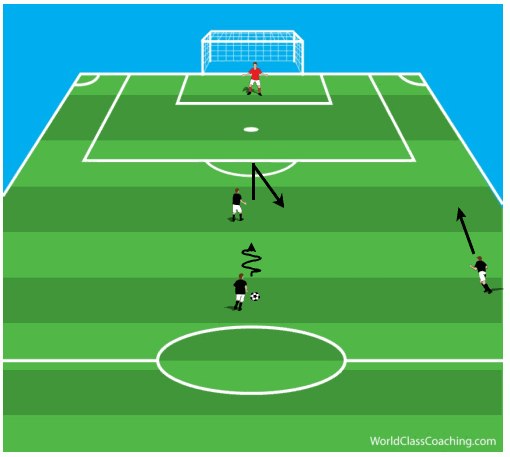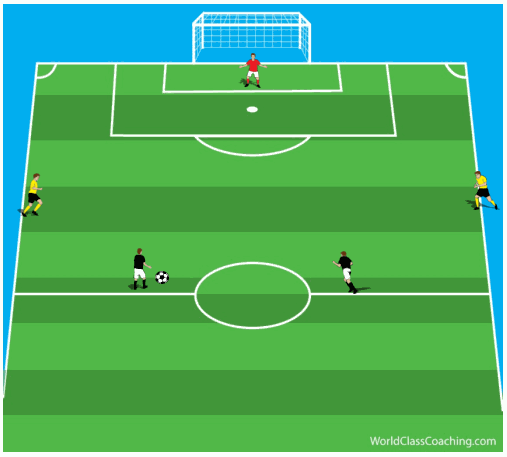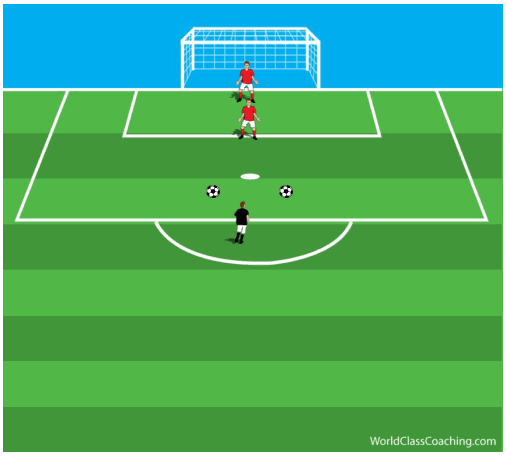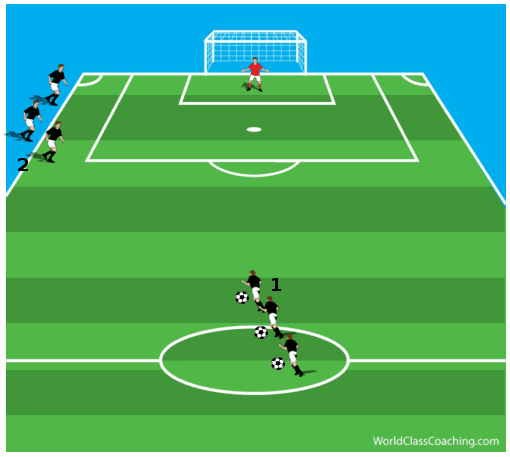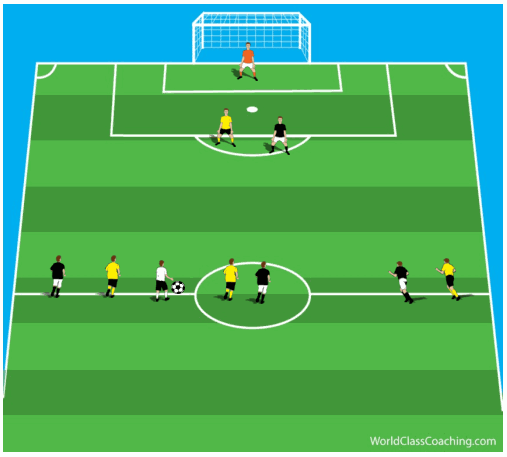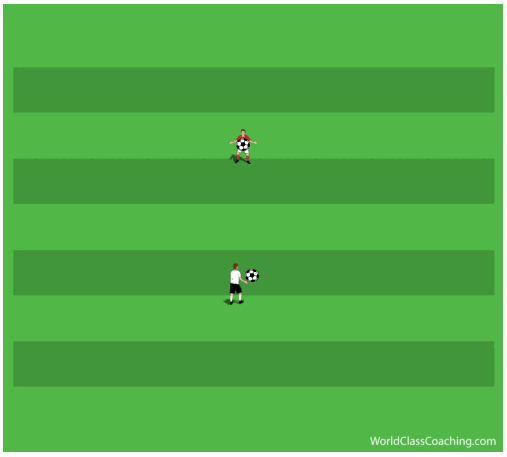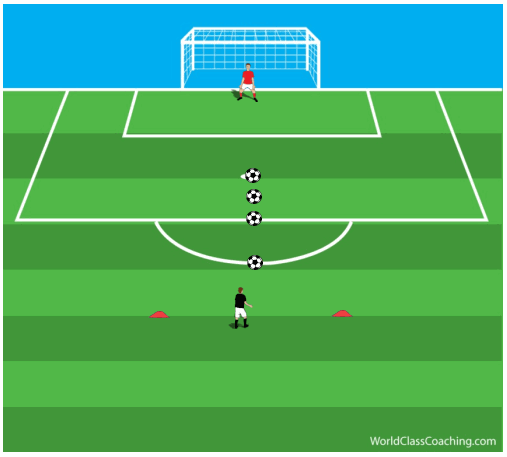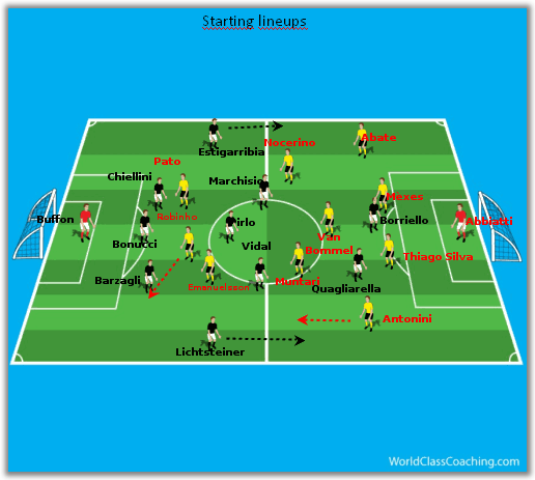Welcome to the FineSoccer Drills Newsletter. Today's featured activity works on 1 v 1 attacking and defending around the 18.
Most of the time, when we work on 1 v 1 play, it's with the attacker facing the defender. However, frequently in games, the attacking player receives the ball with his back to the goal and must create space and turn in order to get the shot. While the attacking player is trying to create space and turn, the defending player is trying to prevent the turn and force the attacker away from the goal.
This is the type of training you would do with small groups because otherwise, there is too much standing around.
Start with a keeper in goal, a line of attackers (in black) at the corner of the 6 and end line and a line of defenders (in yellow) just a step wider than the attackers and 2 yards back. There is a server with some balls wider than the defenders.
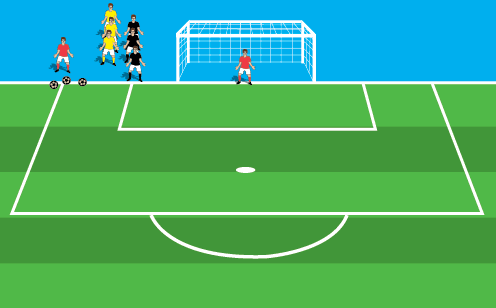 The server plays the ball toward the top of the 18 and the first
The server plays the ball toward the top of the 18 and the first
Continue reading

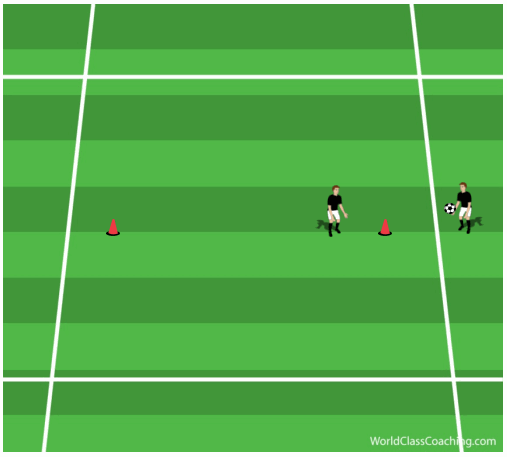

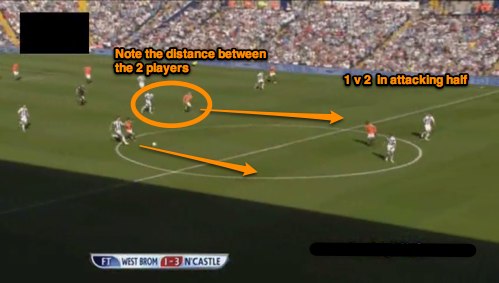
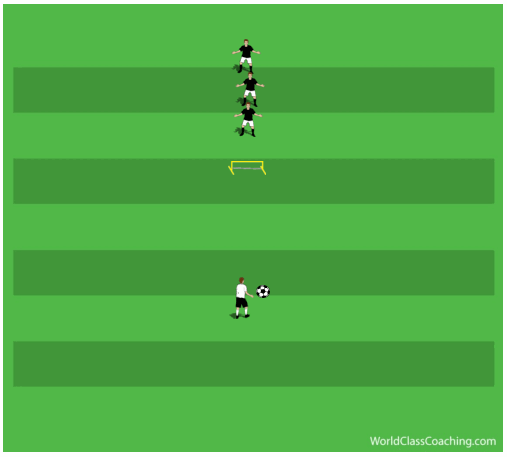
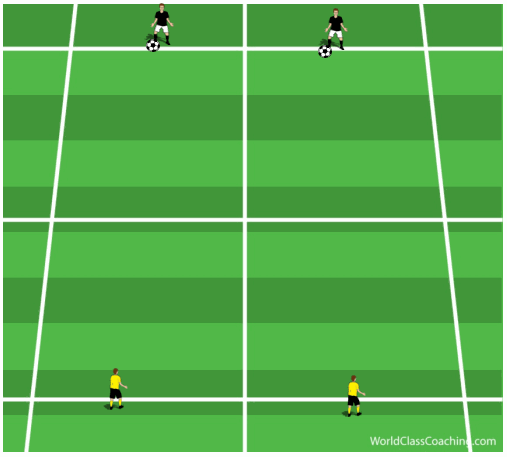
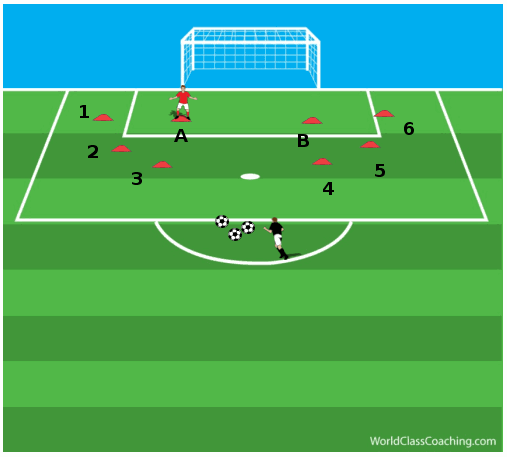
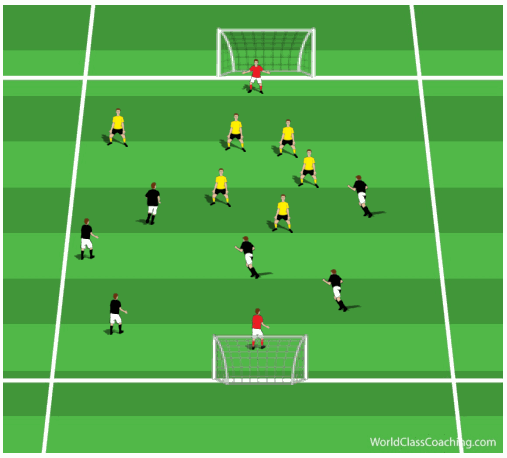
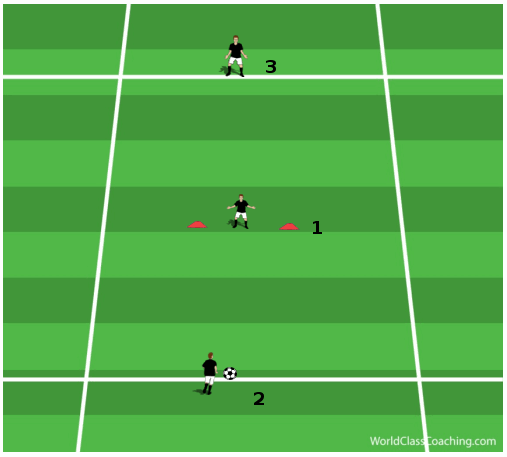 The keeper with the ball (2) shoots and tries to score between the two cones. Keeper 1 makes
The keeper with the ball (2) shoots and tries to score between the two cones. Keeper 1 makes